Pile-up protection test
Three test runs taken by Zhangbu using only the VPD-ZDC minbias triggers (no other triggers in the runs):
12151034: no pile-up protection
12151035: past pile-up protection
12151036: past+future pile-up protection
I did not process all events in these runs, nor did I even manage to process the same number of events from each of these runs, but here are some selected plots directly from Offline QA (full PDFs are attached to this Drupal page):
| 12151034 | 12151035 | 12151036 | |
|---|---|---|---|
| Time bucket of TPC hits | 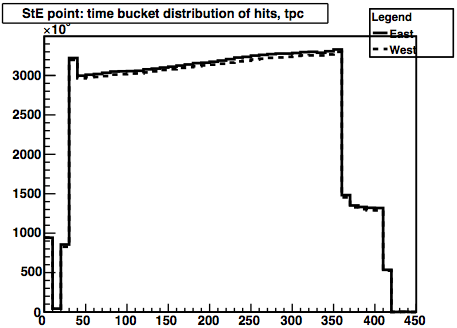 |
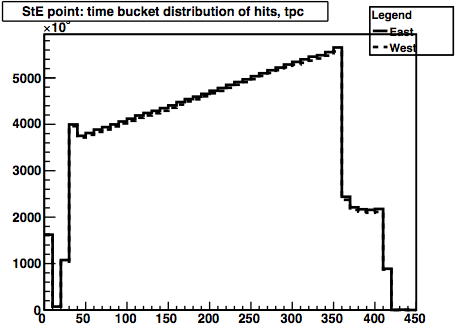 |
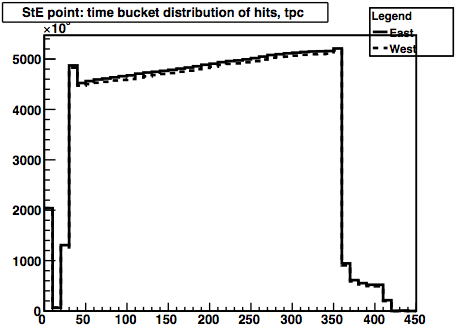 |
| Reconstructed Z of TPC hits | 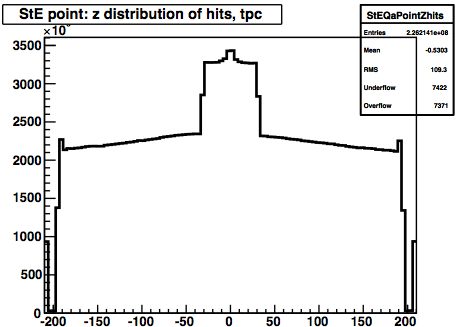 |
 |
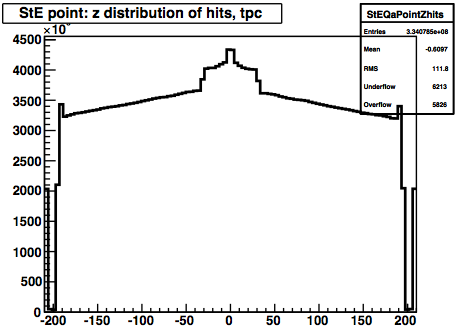 |
| Number of TPC hits | 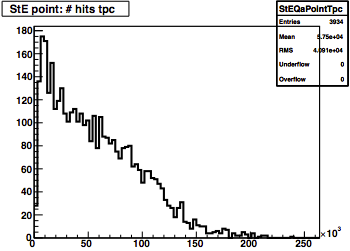 |
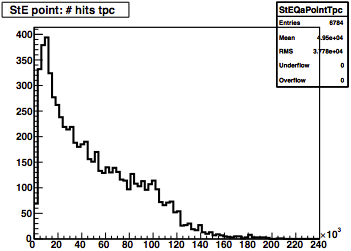 |
 |
| <Number of TPC hits> | 5.8e4 | 5.0e4 | 3.9e4 |
| Number of global tracks | 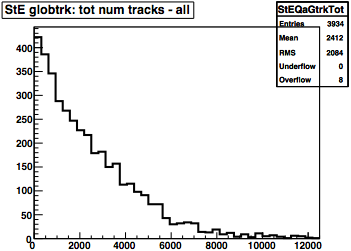 |
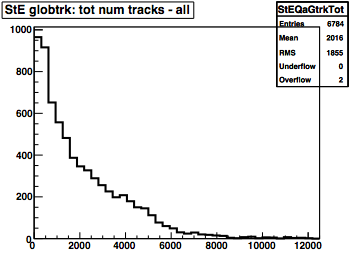 |
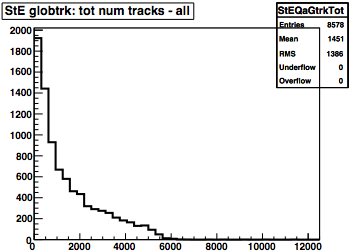 |
| <Number of global tracks> | 2412 | 2016 | 1451 |
| Ratio of primary to global tracks | 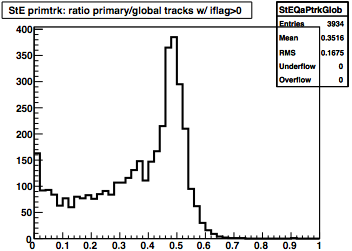 |
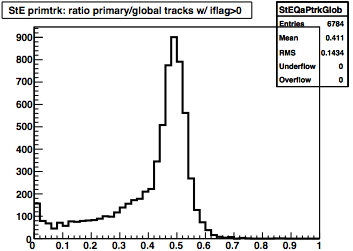 |
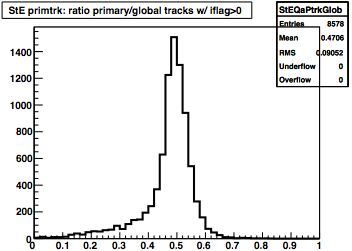 |
| Vertex reconstruction "questionable" means <20% of daughters match to BEMC |
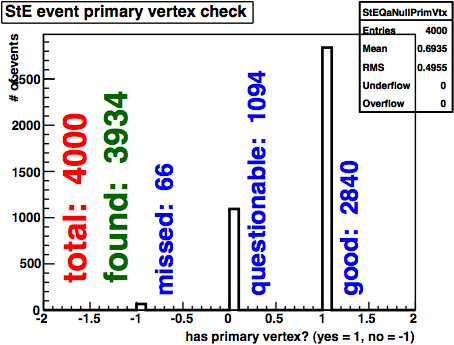 |
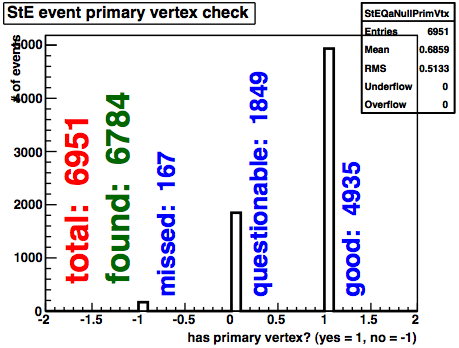 |
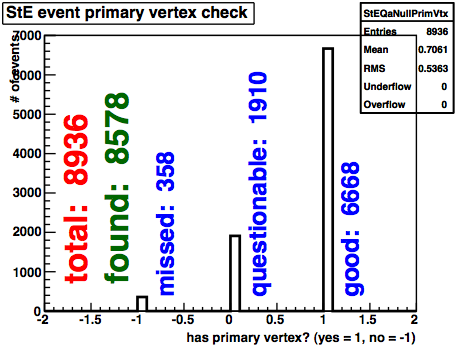 |
| found/total , good/total | 98.4% , 71.0% | 97.6% , 71.0% | 96.0% , 74.6% |
Notes:
- Using only past pile-up protection causes a strong asymmetry in the TPC hits towards later times (slope seen in Z and time distributions), but there is still a slope in the other two plots.
- The data after time bucket ~350, and creating the middle pedestal over the range of [-35,35] in the Z distribution represents some combination of noise and future pile-up since it is due to reading the TPC past its full-length drift duration of ~40 μs. This is reduced using the future protection, but not eliminated. It seems likely that just as our trigger is not 100% efficient, our ability to veto future collisions is similarly not 100% efficient.
- Numbers of TPC hits and global tracks drop reasonably.
- Percentage of events with low primary/global ratio are reduced with the protections.
- Slight reduction in vertices found, but likely beneficial to finding the right vertex.
_________________
Another relevant piece of information is whether these runs were acquired at high luminosity. Here is a plot of ZDC coincidence rate vs. time in seconds (arbitrary zero) for this fill, with the three runs highlighted in red,green,blue in the circle. Also shown is the full Run 11 AuAu200 plot of ZDC coincidence rate vs. time during runs with TPC on and run status is good. It appears that 30 kHz is in the middle of our luminosity range.
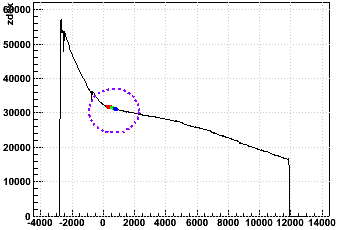
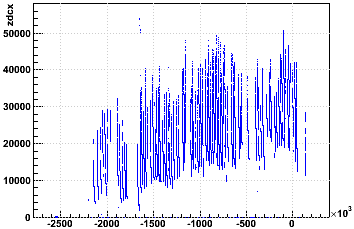
________________
Next is a basic look at a physics-level quantity: refMult. This should really be done by someone who has a better understanding of analyses, but I figured I could quickly make an preliminary stab without using analysis cuts by just opening the MuDsts in a TChain and plotting refMultPos+refMultNeg. THIS RESULT SHOULD BE TAKEN AS VERY PRELIMINARY AND POSSIBLY NAIVE!
The following plot shows refMult distributions and their ratios from all events in the MuDsts I processed plus that produced by FastOffline †, In the refMult plot, black is the no-protection data, red is the past-only protection, and blue is the past+future protection, with all three normalized to have an integral of 1.0. For the ratios, red shows the ratio of the past-only protection to no-protection (isolating the effect of the past protection), and blue shows the ratio of past+future protection to past-only protection (isolating the effect of the future protection). The ratios are scaled so that a flat line "pol0" fit comes out to 1.0 to normalize for different numbers of events. The ratio plot is then repeated using coarser binning. I placed the code for how I made these plots into a comment below.
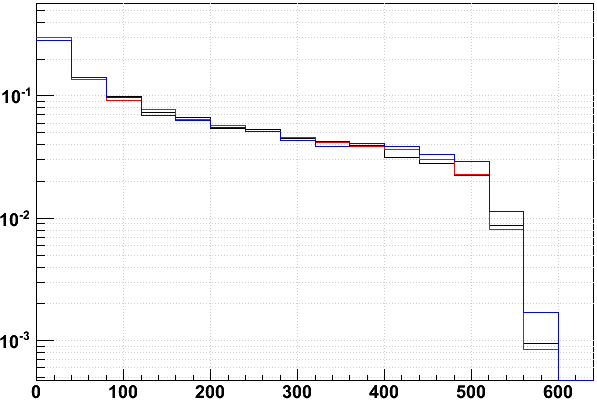
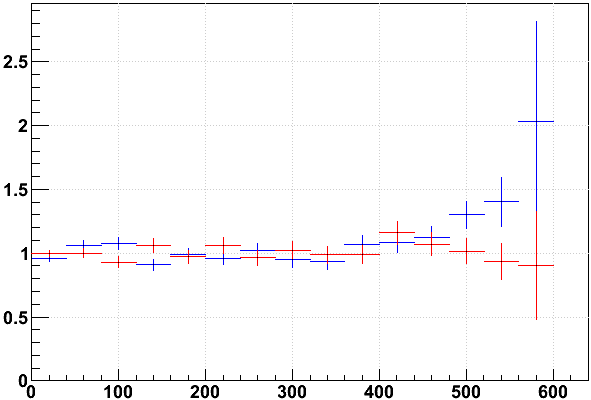
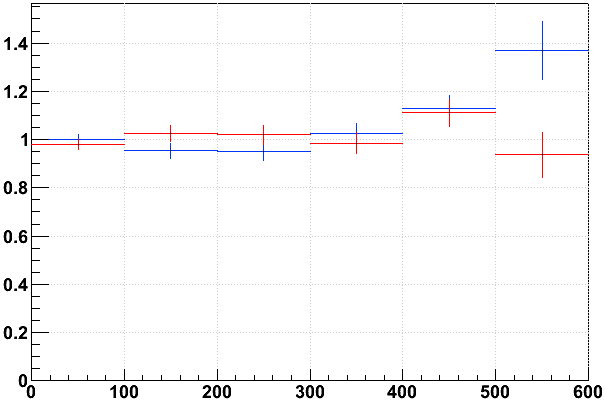
Statistics aren't sufficient to say something at the few percent level, but there appears to be something going on at the high end of the refMult distributions. At least in these plots the rise in events with refMult above 480 when adding future protection looks significant. There's a correlation here in that if a bin fluctuates low in the past-only protection dataset, then it can cause the observed effect of a high blue point and low red point, but the blue points appear to be higher than such a fluctuation from 1.0 for the red points would imply. It would be preferable to have more data points above the "knee" in the refMult distribution (finer binning) where the distribution is rapidly falling, as this region would be the most sensitive to changes in the location of that knee (and thus tracking efficiency) and multiple points helps confirm systematic effects.
So it's hard to draw any firm conclusions, but hints are there of an efficiency improvement at high refMult with the future protection. Zhangbu hypothesized that this may be due to refMult's restriction to mid-rapidity, combined with future pile-up being weighted towards the middle of the TPC and past pile-up towards the endcaps, creating an occupancy-caused drop in efficiency in at high refMult due more to future pile-up than past pile-up. It certainly merits a closer look by people at the analysis level, probably using more of the statistics from these runs.
-Gene
† I was careful to avoid overlap where both FastOffline and I produced the same events in the same file. However, that was a useful pairing as I was able to compare FastOffline output and mine and be certain they were identical. After looking at the Offline QA histograms from FastOffline and going through the numbers, I decided not to update the first table of plots on this page, which used only my output, because the results didn't change in any significant ways.
_______________________________________________________________________
Below are the original test results. These were determined to include the effects of a noisy TPC ground plane pulser. That noise is removed for the above-discussed test, but I keep the below results for records.
_______________________________________________________________________
Three test runs taken by Zhangbu:
12147047: no pile-up protection
12147048: past pile-up protection
12147049: past+future pile-up protection
Z distribution of reconstructed hits in the TPC. The middle pedestal represents future pile-up since it is due to reading the TPC past its full-length drift duration of ~40 μs. The plots are made using ~4000 vpd-zdc-mb events in each (except 12147047, for which only 1000 events had finished when I made the plot).
| 12147047 | 12147048 | 12147049 |
|---|---|---|
 |
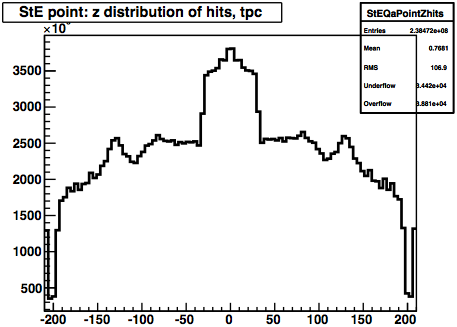 |
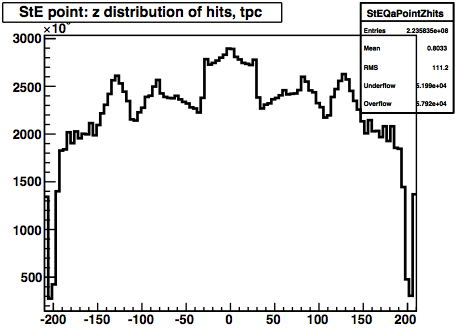 |
There is certainly a reduction in the middle pedestal, but it is not eliminated.
-Gene
- genevb's blog
- Login or register to post comments
